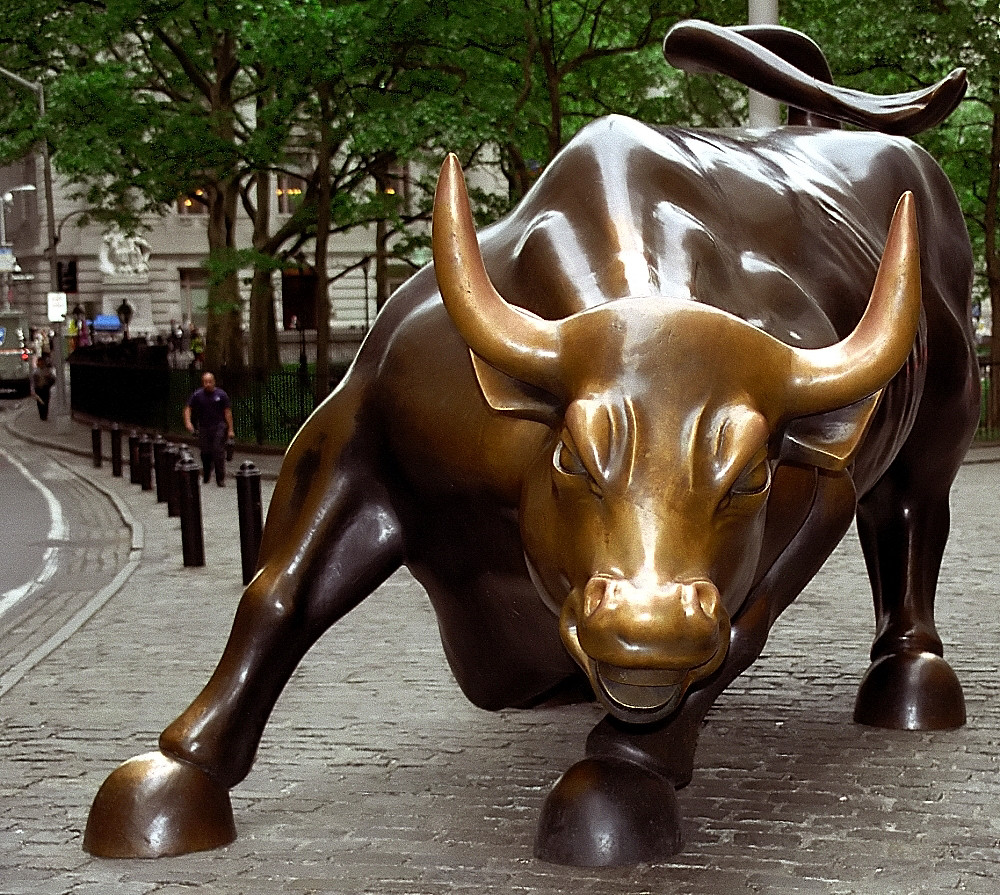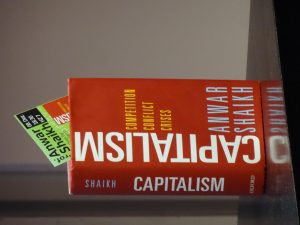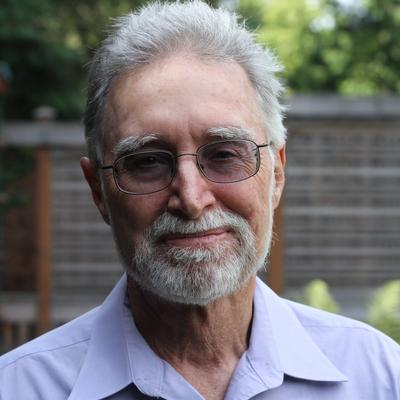Milton's Myth #6: Markets Equal Economic Freedom
✑ ROBIN HAHNEL | ± 7 minutes
Millton Friedman argues that markets promote economic freedom, provided the transaction is bilaterally voluntary and informed. (All of Milton's myths here).
The first problem is that it is not one person one vote, but one dollar one vote in the market place. Some claim this as a virtue: If I have a particularly strong preference for a good I can cast more dollar ballots to reflect the intensity of my desire. But this is confusing two issues. There is nothing wrong with a system of social choice that permits people to express the intensity of their desires. In fact, this is necessary if we are to achieve self-managed decision making. But, there is something wrong when people have vastly different numbers of dollar ballots to cast in market elections. Few would hold up as a paragon of liberty a political election in which some were permitted to vote thousands of times and others were permitted to vote only once, or not at all. But this is exactly the kind of freedom the market provides. Those with more income have a greater impact on what suppliers in markets will be signaled to provide than those with less income, which explains why “market freedom” often leads to outcomes we know do not reflect what most people need or want. Why are there so many plastic surgeons when many communities suffer from lack of basic family practitioners? How can the demand for cosmetic plastic surgery be so high and the demand for basic family healthcare so low? There are many more who vote in the healthcare market for basic healthcare than for plastic surgery. And the intensity of people’s desires for basic healthcare is higher than the intensity of desires for plastic surgery as well. But those voting for plastic surgery have many more votes to cast for even their less pressing desires than most voting for basic healthcare have even for life and death needs. Hence the provision of medical services of marginal benefit, like plastic surgery, and the failure to provide essential medical services for the poor, when healthcare decisions are left to the market place.
Friedman opens the door when he acknowledges that exchange under non-competitive conditions is coercive. Yet exchanges under non-competitive conditions are bilaterally voluntary, informed and mutually beneficial. So one has to wonder why Friedman agrees that exchanges in non-competitive markets are coercive, and objectionable. In a one company town since I am free to remain unemployed, I am presumably better off working than not working if you find me employed. In a one bank town since I am free not to borrow at all, I am presumably better off if I borrow than I would have been had I not. But not even Milton Friedman has the chutzpah to call these non-competitive market outcomes non-coercive – even though the agreement is voluntary and may be mutually beneficial in both cases. Once we recognize that voluntary exchanges under non-competitive conditions are coercive since only one party to the exchange has the opportunity to choose among different partners, it is easy to see how exchanges under competitive conditions can be coercive as well. When initial conditions are unequal, voluntary, informed, and mutually beneficial exchanges will be coercive and lead to inequitable outcomes even if exchanges take place under competitive conditions.
The third problem with Friedman’s assertion that market decisions are free from coercion is that buyers and sellers often come to agreements with adverse consequences for third parties who have no say in the matter whatsoever. Friedman acknowledges that victims of what he calls “neighborhood effects” are coerced, but presumes these are minor inconveniences that seldom occur. As we saw in Chapter 4, political economists believe external effects are the rule rather than the exception in market exchanges, thereby leaving many disenfranchised and “coerced” when buyers and sellers make decisions that affect them without giving a thought to consulting their interests.
The fourth problem is that Friedman assumes away the best solution for coordinating economic activities. He simply asserts “there are only two ways of coordinating the economic activities of millions – central direction involving the use of coercion – and voluntary cooperation – the technique of the market place.” In the next chapter we will explore how participatory, democratic planning works, and see how it permits all to partake in economic decision making in proportion to the degree they are affected by outcomes. According to Friedman participatory planning must fall into the category of “central direction involving the use of coercion.” But as readers will see, this is most certainly not the case, invalidating Friedman’s assertion that there are only two ways of coordinating economic activities – a crucial assumption for which Friedman offers no argument whatsoever.
This article is part of a list of refutations of ideas from Milton Friedman and mainstream economists in Robin Hahnel's book 'The ABC's of Political Economy' (2014). See all other myths already published on Socialist Economist here.
‟Exchanges under competitive conditions can be coercive as well.
Millton Friedman argues that markets promote economic freedom, provided the transaction is bilaterally voluntary and informed. (All of Milton's myths here).
Originally published in chapter ten of Hahnel's book The ABC's of Political Economy: A Modern Approach (Pluto Press, 2014).
|
|---|
About the author (click)
Robin Eric Hahnel (1946) is Professor Emeritus of Economics at American University in Washington DC. He has published on marxian economics, liberating theory, economic crises , ecological issues and “participatory economics”. He has frequently contributed to Znet and is the co-director of Economics for Equity and the Environment.
General introduction (click)
This article is part of a series refuting several myths of the neoliberal economist Milton Friedman (1912-2006), extracted from the book ABC's of Political Economy: A Modern Approach (Pluto Press, 2014) by economist Robin Hahnel. The general introduction was included in the first post of this series but can also be found here below↴
When Milton Friedman published Capitalism and Freedom (University of Chicago Press) in 1964 free market capitalism was not yet ascendant. In the post WWII era Keynesian, social democratic capitalism was more dominant, and government regulation and guidance of the economy was generally considered necessary, prudent, and desirable. So Friedman was writing as a dissident when he argued that only free market capitalism can provide economic freedom, promote political liberty, allocate resources efficiently, motivate people successfully, and reward people fairly, and government intervention was usually unnecessary and counterproductive.
By 2002 when the first edition of The ABCs of Political Economy was published neoliberal capitalism stood triumphant over the demise of not only centrally planned Communism, but social democratic, Keynesian capitalism as well. Friedman’s disciples were more confident than ever that free market capitalism was the best economy possible. Deregulation, privatization, and dismantling the social safety net had become the order of the day. Keynesians had been successfully isolated and silenced, and only a scattered tribe of “heterodox economists” any longer challenged Milton Friedman’s claims about the virtues of free market capitalism.
What a difference twelve years can make! While neoliberal capitalism still clings to power almost everywhere in 2014, and especially within the economics profession, there are now many who doubt that free market capitalism is truly the best economic system for the vast majority. Six years after the worst financial crash in four generations the global financial system remains without adequate regulation, and is just as dangerous as it was before the collapse of Lehman Bros. Five years after the largest drop in GDP since the Great Depression unemployment remains high in all the advanced economies with no end in sight. And despite overwhelming evidence that we are on course to unleash disastrous climate change, carbon emissions continue to rise everywhere. While the tongues of all but a few critics were tied in 2002, there are now many voices bemoaning the loss of hard won reforms neoliberals assured us were counterproductive, no longer necessary, or unaffordable. Every day more people are realizing that we are on course for an ecological disaster of Biblical proportions. As our “old economies” continue to fail us, there is rising interest in a potpourri of initiatives that are self-consciously not business-as-usual economics, called the “new” or “future” economy. And finally, there is a notable stirring of renewed interest in alternatives to capitalism altogether. However, it is still instructive to begin a careful evaluation of free market capitalism with a point-by-point response to Milton Friedman’s claims about its purported virtues that have grown to become popular myths about capitalism. After which we can see where criticisms raised by protest movements in Europe and the US during the past five years fit into the long, historic debate over the pros and cons of laissez faire capitalism.
When Milton Friedman published Capitalism and Freedom (University of Chicago Press) in 1964 free market capitalism was not yet ascendant. In the post WWII era Keynesian, social democratic capitalism was more dominant, and government regulation and guidance of the economy was generally considered necessary, prudent, and desirable. So Friedman was writing as a dissident when he argued that only free market capitalism can provide economic freedom, promote political liberty, allocate resources efficiently, motivate people successfully, and reward people fairly, and government intervention was usually unnecessary and counterproductive.
By 2002 when the first edition of The ABCs of Political Economy was published neoliberal capitalism stood triumphant over the demise of not only centrally planned Communism, but social democratic, Keynesian capitalism as well. Friedman’s disciples were more confident than ever that free market capitalism was the best economy possible. Deregulation, privatization, and dismantling the social safety net had become the order of the day. Keynesians had been successfully isolated and silenced, and only a scattered tribe of “heterodox economists” any longer challenged Milton Friedman’s claims about the virtues of free market capitalism.
What a difference twelve years can make! While neoliberal capitalism still clings to power almost everywhere in 2014, and especially within the economics profession, there are now many who doubt that free market capitalism is truly the best economic system for the vast majority. Six years after the worst financial crash in four generations the global financial system remains without adequate regulation, and is just as dangerous as it was before the collapse of Lehman Bros. Five years after the largest drop in GDP since the Great Depression unemployment remains high in all the advanced economies with no end in sight. And despite overwhelming evidence that we are on course to unleash disastrous climate change, carbon emissions continue to rise everywhere. While the tongues of all but a few critics were tied in 2002, there are now many voices bemoaning the loss of hard won reforms neoliberals assured us were counterproductive, no longer necessary, or unaffordable. Every day more people are realizing that we are on course for an ecological disaster of Biblical proportions. As our “old economies” continue to fail us, there is rising interest in a potpourri of initiatives that are self-consciously not business-as-usual economics, called the “new” or “future” economy. And finally, there is a notable stirring of renewed interest in alternatives to capitalism altogether. However, it is still instructive to begin a careful evaluation of free market capitalism with a point-by-point response to Milton Friedman’s claims about its purported virtues that have grown to become popular myths about capitalism. After which we can see where criticisms raised by protest movements in Europe and the US during the past five years fit into the long, historic debate over the pros and cons of laissez faire capitalism.
M
ilton Friedman argues that the principal virtue of markets is they promote economic freedom. This claim is such an important part of capitalist mythology that it is worth quoting Friedman’s argument at some length:
The basic problem of social organization is how to coordinate the economic activities of large numbers of people. . . . The challenge to the believer in liberty is to reconcile this widespread interdependence with individual freedom. Fundamentally there are only two ways of coordinating the economic activities of millions. One is central direction involving the use of coercion – the technique of the army and of the modern totalitarian state. The other is voluntary cooperation of individuals – the technique of the market place. The possibility of coordination through voluntary cooperation rests on the elementary, yet frequently denied, proposition that both parties to an economic transaction benefit from it, provided the transaction is bilaterally voluntary and informed. So long as effective freedom of exchange is maintained, the central feature of the market organization of economic activity is that it prevents one person from interfering with another in respect of most of his activities. The consumer is protected from coercion by the seller because of the presence of other sellers with whom he can deal. The seller is protected from coercion by the consumer because of other consumers to whom he can sell. The employee is protected from coercion by the employer because of other employers for whom he can work, and so on. And the market does this impersonally and without centralized authority.
(Capitalism and Freedom: 12–13)
The first problem is that it is not one person one vote, but one dollar one vote in the market place. Some claim this as a virtue: If I have a particularly strong preference for a good I can cast more dollar ballots to reflect the intensity of my desire. But this is confusing two issues. There is nothing wrong with a system of social choice that permits people to express the intensity of their desires. In fact, this is necessary if we are to achieve self-managed decision making. But, there is something wrong when people have vastly different numbers of dollar ballots to cast in market elections. Few would hold up as a paragon of liberty a political election in which some were permitted to vote thousands of times and others were permitted to vote only once, or not at all. But this is exactly the kind of freedom the market provides. Those with more income have a greater impact on what suppliers in markets will be signaled to provide than those with less income, which explains why “market freedom” often leads to outcomes we know do not reflect what most people need or want. Why are there so many plastic surgeons when many communities suffer from lack of basic family practitioners? How can the demand for cosmetic plastic surgery be so high and the demand for basic family healthcare so low? There are many more who vote in the healthcare market for basic healthcare than for plastic surgery. And the intensity of people’s desires for basic healthcare is higher than the intensity of desires for plastic surgery as well. But those voting for plastic surgery have many more votes to cast for even their less pressing desires than most voting for basic healthcare have even for life and death needs. Hence the provision of medical services of marginal benefit, like plastic surgery, and the failure to provide essential medical services for the poor, when healthcare decisions are left to the market place.
‟Few would hold up as a paragon of liberty a political election in which some were permitted to vote thousands of times and others were permitted to vote only once, or not at all. But this is exactly the kind of freedom the market provides.Second, in the simple corn model in Chapter 3 [of The ABC's of Political Economy] we saw how exchanges in labor and credit markets that are bilaterally voluntary and informed can still lead to growing inequalities – even when employees and borrowers are supposedly “protected from coercion” by a multiplicity of employers and lenders to choose from. The lie behind Friedman’s portrayal of market exchanges as non-coercive is that he ignores the importance of what those who confront each other in the market place arrive with. As we saw in the corn model, when some arrive at the labor market with seed corn and others have none, it is entirely predictable the seedy will end up being the employers and the seedless their employees. Moreover, as long as seed corn is scarce it is predictable the seedy employers will capture the lion’s share of the efficiency gain from the labor exchange as profits, even though the employers don’t work at all. Similarly, those who arrive at the credit market with more seed corn will lend to those with less, and as long as seed corn is scarce the lenders will capture the lion’s share of the resulting increase in the borrowers’ productivity as interest, even though the lenders don’t work at all. Friedman can call these outcomes non-coercive if he wants, on the grounds that the seedless volunteered to exchange their laboring capacities for a wage, and borrowers agreed to pay interest knowing full well what the consequences would be. But this merely displaces the source of coercion. It is their seedlessness that “coerces” employees and borrowers to “volunteer” to be fleeced. Are we to believe they would have “volunteered” to be the ones who showed up at the labor or credit market seedless in the first place?
 |
| Milton Friedman + art by Banksy |
Friedman opens the door when he acknowledges that exchange under non-competitive conditions is coercive. Yet exchanges under non-competitive conditions are bilaterally voluntary, informed and mutually beneficial. So one has to wonder why Friedman agrees that exchanges in non-competitive markets are coercive, and objectionable. In a one company town since I am free to remain unemployed, I am presumably better off working than not working if you find me employed. In a one bank town since I am free not to borrow at all, I am presumably better off if I borrow than I would have been had I not. But not even Milton Friedman has the chutzpah to call these non-competitive market outcomes non-coercive – even though the agreement is voluntary and may be mutually beneficial in both cases. Once we recognize that voluntary exchanges under non-competitive conditions are coercive since only one party to the exchange has the opportunity to choose among different partners, it is easy to see how exchanges under competitive conditions can be coercive as well. When initial conditions are unequal, voluntary, informed, and mutually beneficial exchanges will be coercive and lead to inequitable outcomes even if exchanges take place under competitive conditions.
The third problem with Friedman’s assertion that market decisions are free from coercion is that buyers and sellers often come to agreements with adverse consequences for third parties who have no say in the matter whatsoever. Friedman acknowledges that victims of what he calls “neighborhood effects” are coerced, but presumes these are minor inconveniences that seldom occur. As we saw in Chapter 4, political economists believe external effects are the rule rather than the exception in market exchanges, thereby leaving many disenfranchised and “coerced” when buyers and sellers make decisions that affect them without giving a thought to consulting their interests.
The fourth problem is that Friedman assumes away the best solution for coordinating economic activities. He simply asserts “there are only two ways of coordinating the economic activities of millions – central direction involving the use of coercion – and voluntary cooperation – the technique of the market place.” In the next chapter we will explore how participatory, democratic planning works, and see how it permits all to partake in economic decision making in proportion to the degree they are affected by outcomes. According to Friedman participatory planning must fall into the category of “central direction involving the use of coercion.” But as readers will see, this is most certainly not the case, invalidating Friedman’s assertion that there are only two ways of coordinating economic activities – a crucial assumption for which Friedman offers no argument whatsoever.
This article is part of a list of refutations of ideas from Milton Friedman and mainstream economists in Robin Hahnel's book 'The ABC's of Political Economy' (2014). See all other myths already published on Socialist Economist here.























Comments
Post a Comment
Your thoughts...